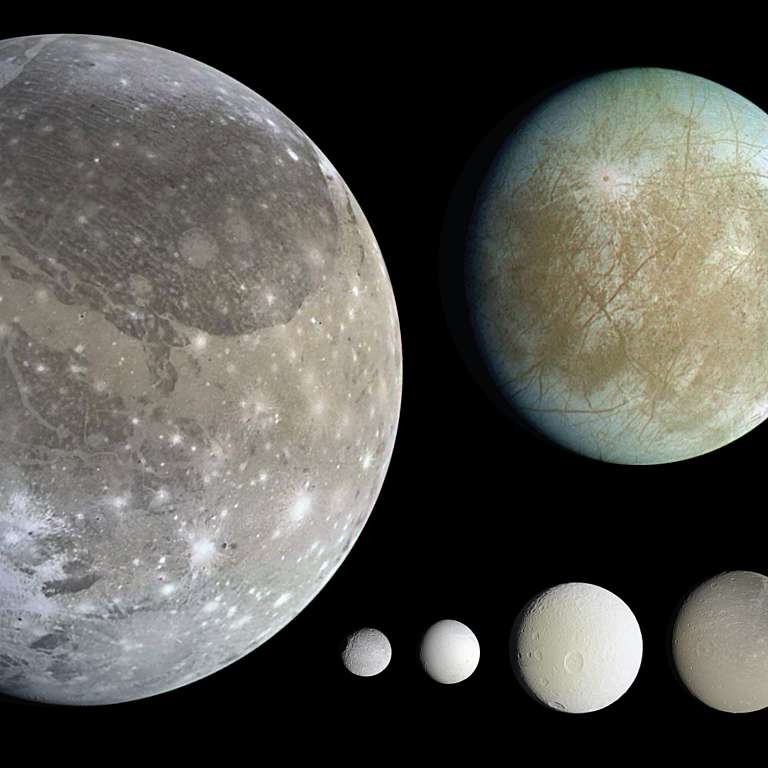All
All
Stories, updates, insights, and original analysis from The Planetary Society.
A serendipitous observation of tiny rocks in Jupiter's orbit by Galileo
A look at an older paper describing Galileo's possible sighting of individual ring particles orbiting Jupiter as companions to its inner moon Amalthea.
Doing a science on Titan
A tale from the scientific trenches: laboratory work to simulate Titan's rich atmosphere.
Pluto's seasons and what New Horizons may find when it passes by
New Horizons might see a Pluto with a northern polar cap, a southern polar cap, or both caps, according to work by Leslie Young.
Planetary Society Weekly Hangout (Special Time): MESSENGER at Mercury with Larry Nittler, Fri May 3 5pm PDT / midnight UTC
Note the special time! In this week's Planetary Society hangout at 5pm PDT / midnight UTC, I'll talk with MESSENGER deputy principal investigator Larry Nittler about what MESSENGER has accomplished in its prime and extended missions at Mercury, and what it stands to do if awarded a mission extension.
2011 HM102: A new companion for Neptune
This month my latest paper made it to print in the Astronomical Journal. It's a short piece that describes a serendipitous discovery that my collaborators and I made while searching for a distant Kuiper Belt Object for the New Horizons spacecraft to visit after its 2015 Pluto flyby.
An Amazing Evening for Planetary Defense
Bill Nye, Bruce Betts, Mat Kaplan, Meteorite Man Geoffrey Notkin and stars of planetary science at the Planetary Defense Conference public event in Flagstaff.
Tides of light and ice: Water and rock made from snowmelt on Mars
A recently published paper proposes that much of the sedimentary rock on Mars formed during rare, brief periods of very slight wetness under melting snow.
LPSC 2013: Seeing in Permanent Shadow
The case for water ice hidden in permanently shadowed regions at the north pole of the planet Mercury received another boost recently. On Wednesday March 20, 2013 at the Lunar and Planetary Science Conference, Nancy Chabot presented the very first visible-light images of what is in the shadows of these polar craters.
LPSC 2013: watery Martian minerals
Some interesting results from the Lunar and Planetary Science Conference on clay minerals on Mars and what they might mean about ancient water.
LPSC 2013: License to Chill (or, the solar system's icy moons)
Reports from the March 19 session at the Lunar and Planetary Science Conference covering eight icy moons in the outer solar system: Ganymede, Europa, Dione, Rhea, Mimas, Tethys, Enceladus, and Miranda.
LPSC 2013: The Smaller They Are, The Better They Shake
Really cool movies from Jim Richardson propose to explain how the same physics of impact cratering can produce such differently-appearing surfaces as those of the Moon, large asteroids like Eros, and teeny ones like Itokawa.
LPSC 2013: Do we have a meteorite from Mercury?
Before yesterday, my answer to this question would be
LPSC 2013: Sedimentary stratigraphy with Curiosity and Opportunity
A mind-boggling quantity of information is being presented at the Lunar and Planetary Science Conference. In my first report from the meeting, I try to make sense of the Curiosity and Opportunity sessions.
Comet PANSTARRS from the other side of the Sun!
Comet PANSTARRS is delighting northern hemisphere viewers right now. But it's also big, bright, and beautiful to the STEREO spacecraft.
Yes, it was once a Martian lake: Curiosity has been sent to the right place
The news from the Curiosity mission today is this: Curiosity has found, at the site called John Klein, a rock that contains evidence for a past environment that would have been suitable for Earth-like microorganisms.
Instruments for the JUICE Jovian Mission
The European Space Agency (ESA) announced the list of instruments selected for its JUICE mission to explore the Jovian system for three years starting in the 2030 following a 2022 launch.
Meteor showers on Titan: an example of why Twitter is awesome for scientists and the public
I use a variety of social networking tools to perform my job, but there's one that's more important and valuable to me than all the rest combined: Twitter. Yesterday afternoon there was a discussion on Twitter that exemplifies its value and fun: are there visible meteors on Titan?
Sea Salt
Ever wonder what it would taste like if you could lick the icy surface of Jupiter’s Europa? The answer may be that it would taste a lot like that last mouthful of water that you accidentally drank when you were swimming at the beach on your last vacation.
Will comet Siding Spring make a meteor shower on Mars?
JPL's Solar System Dynamics group shows that there is still a possibility that C/2013 A1 (Siding Spring) could hit Mars. But the uncertainty in its position at that time is large -- the closest approach could happen an hour earlier, or an hour later -- so we're a long way from knowing yet whether it will or (more likely) won't impact.


 Explore Worlds
Explore Worlds Find Life
Find Life Defend Earth
Defend Earth


 Sun
Sun Mercury
Mercury Venus
Venus Earth
Earth Mars
Mars Jupiter
Jupiter Saturn
Saturn Uranus
Uranus Neptune
Neptune Small Bodies
Small Bodies

















